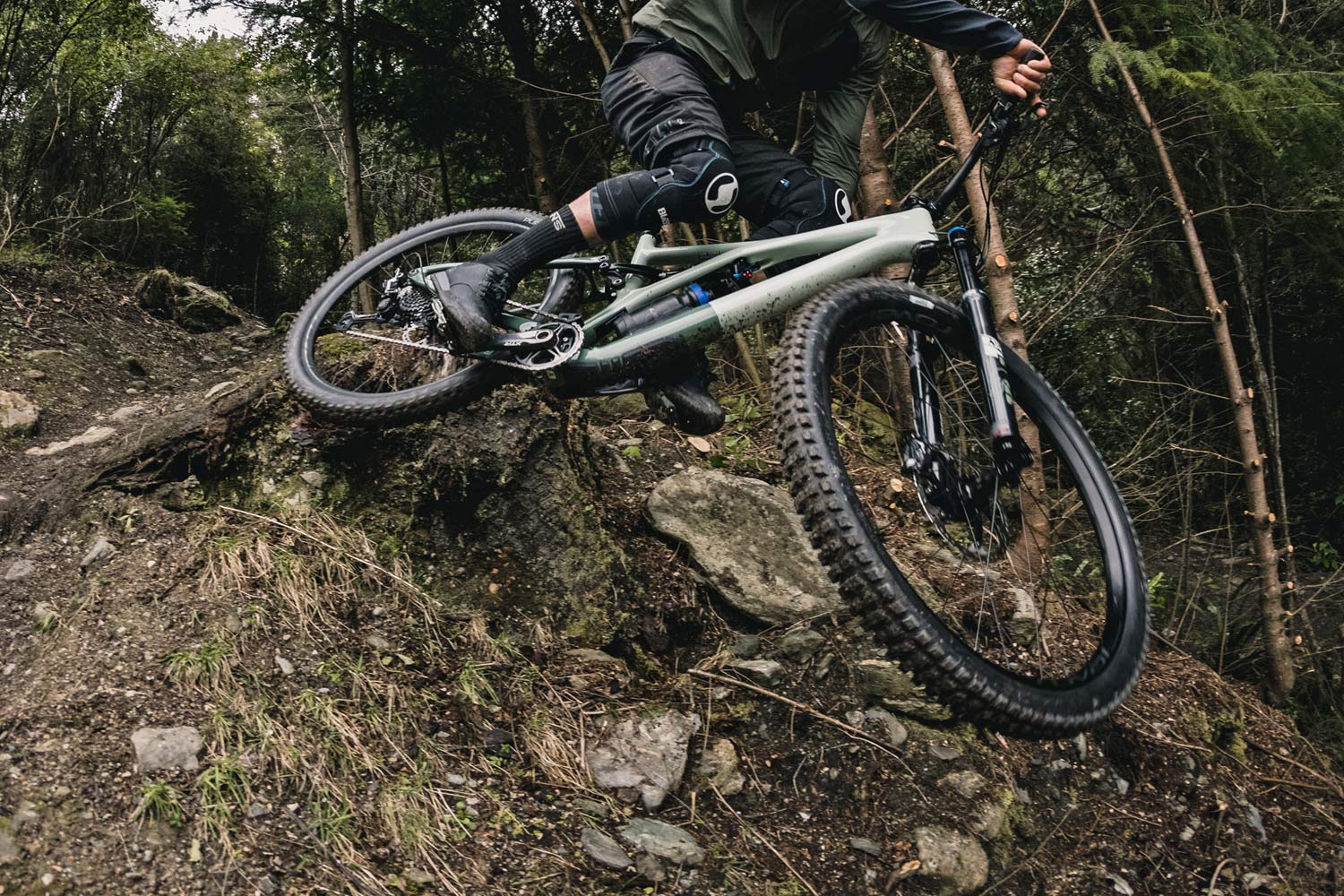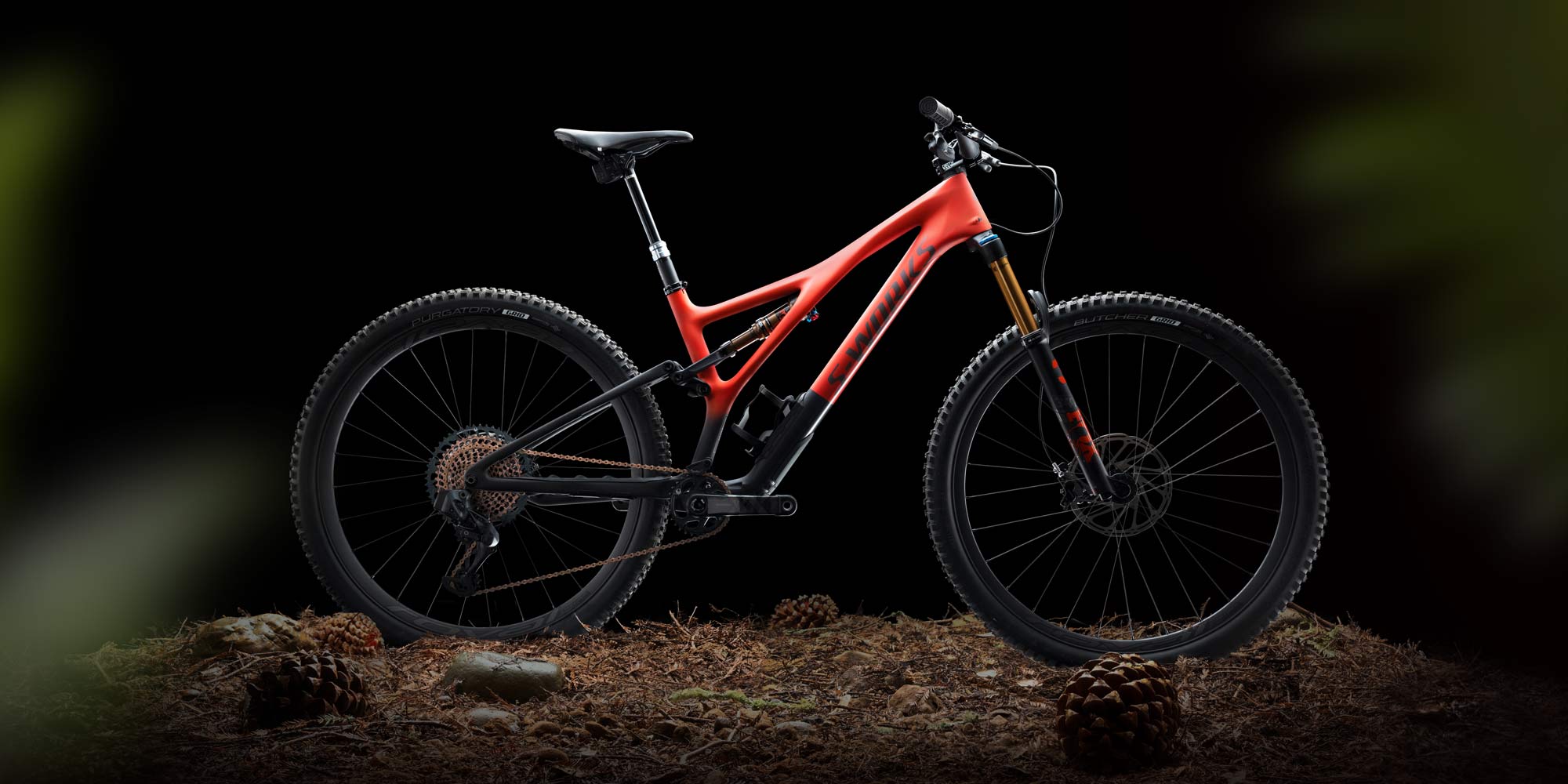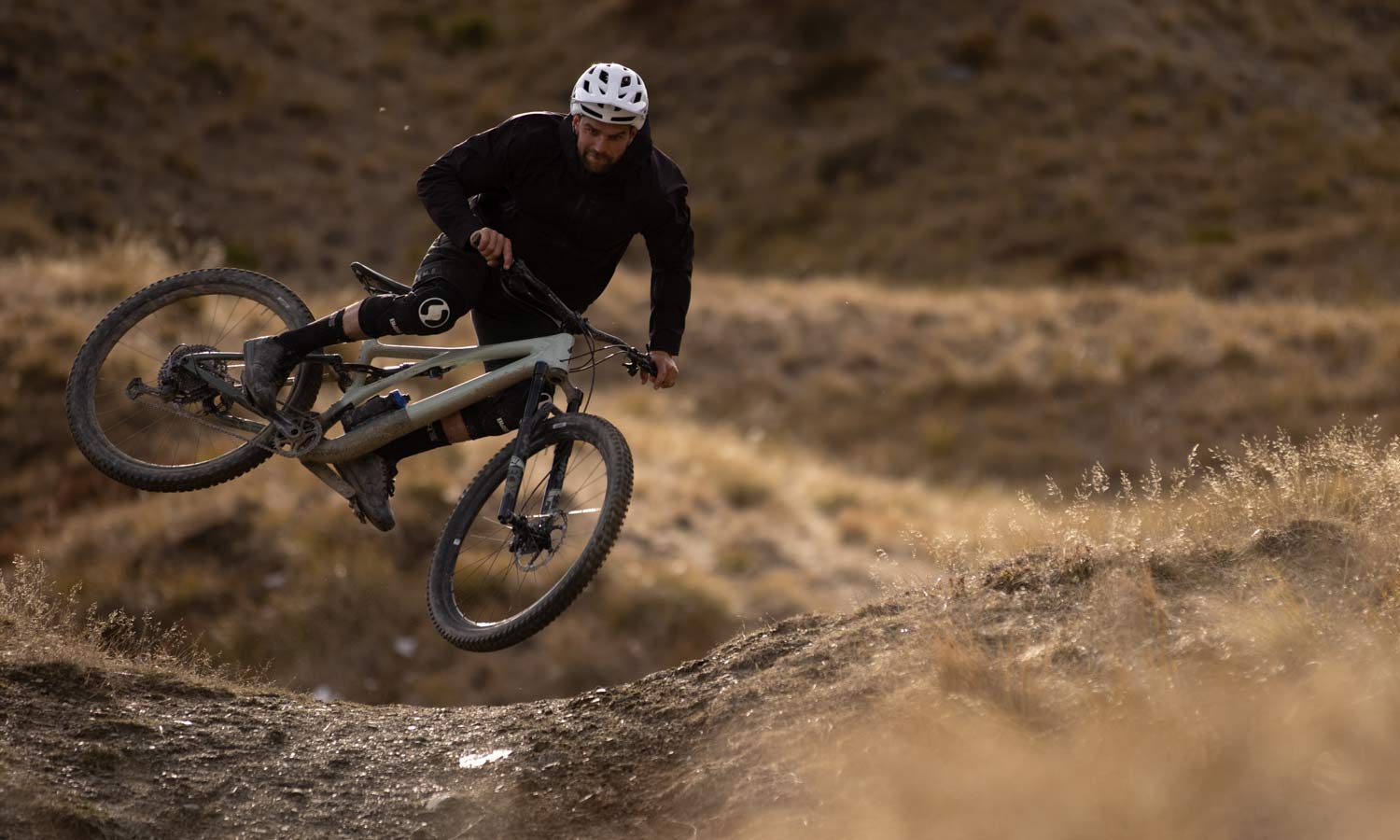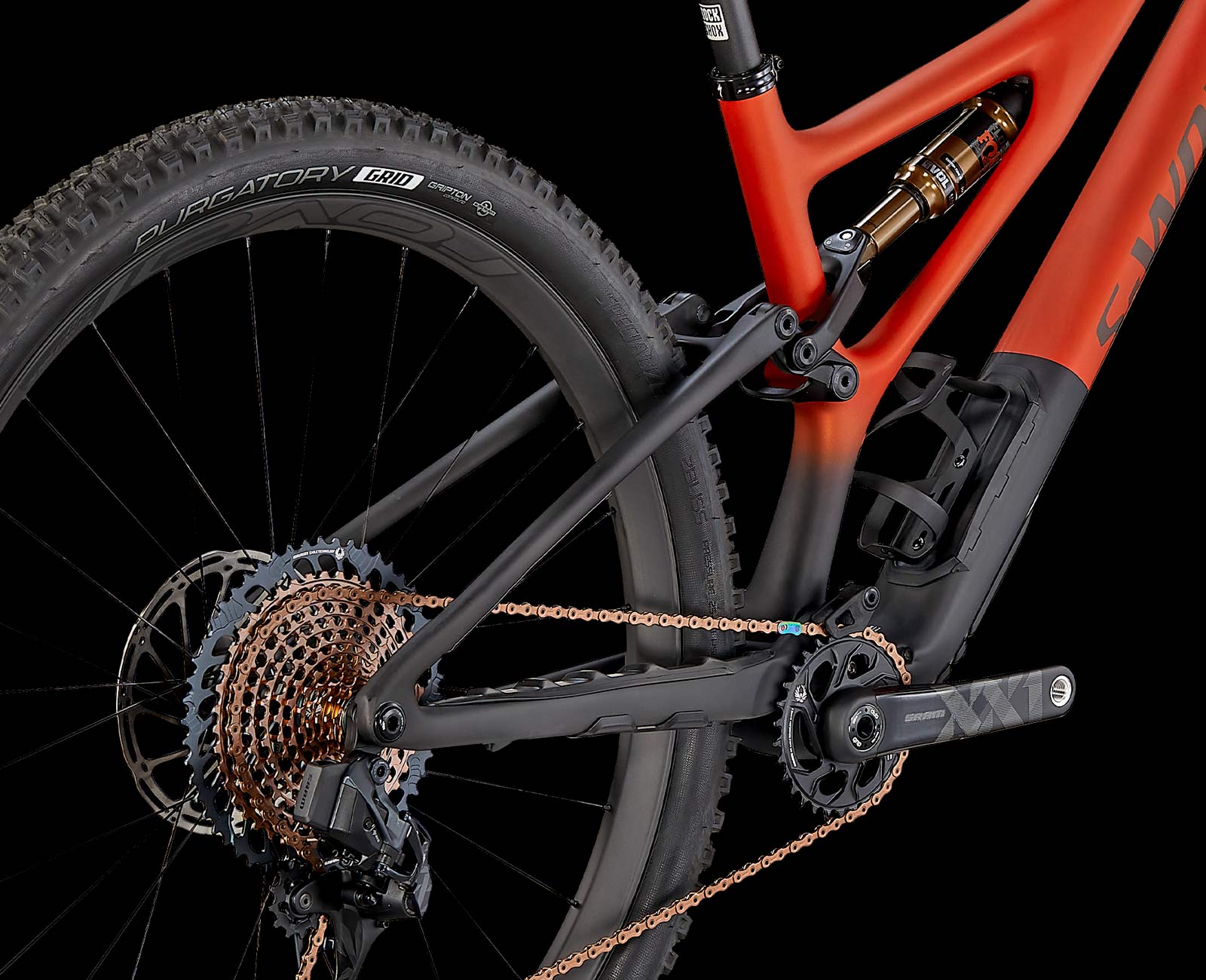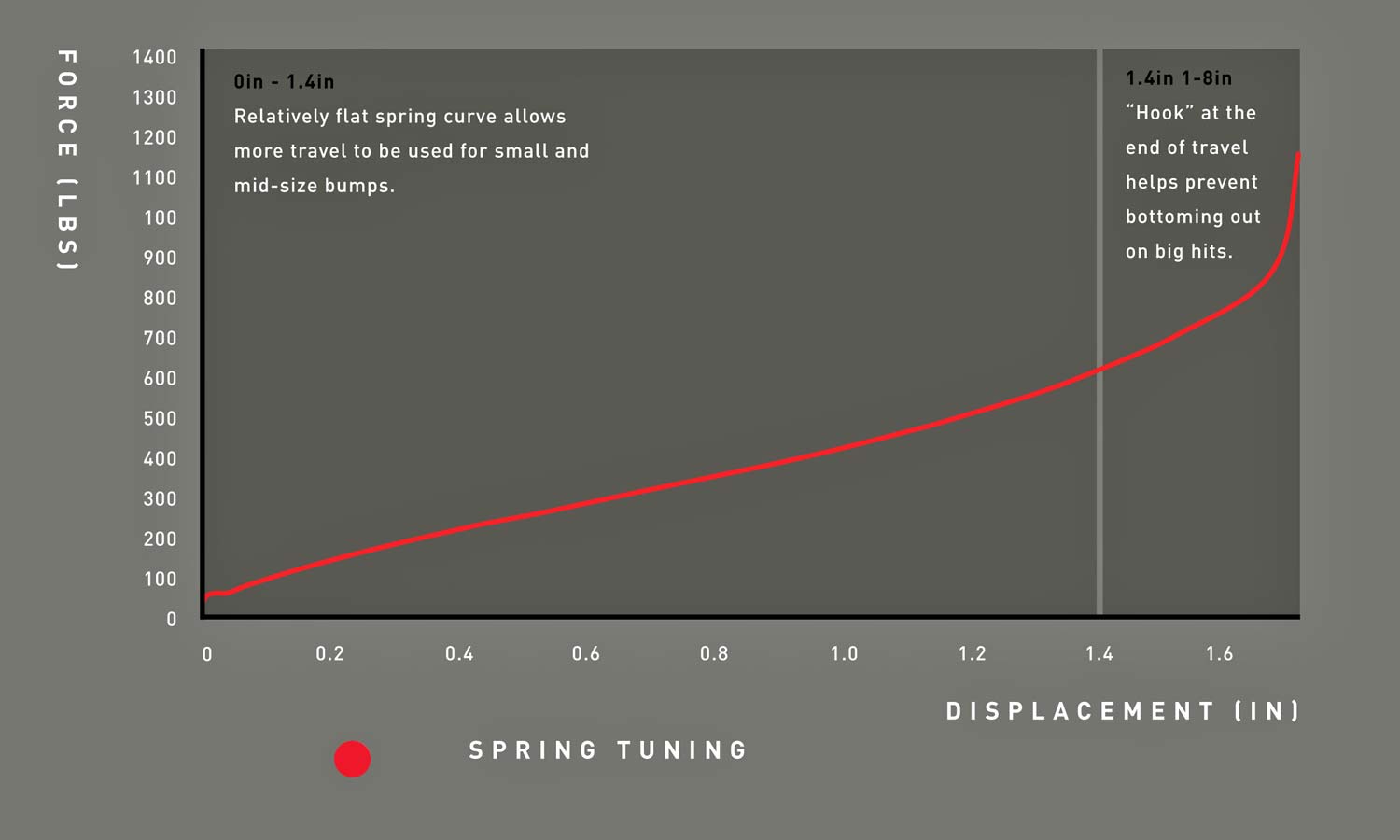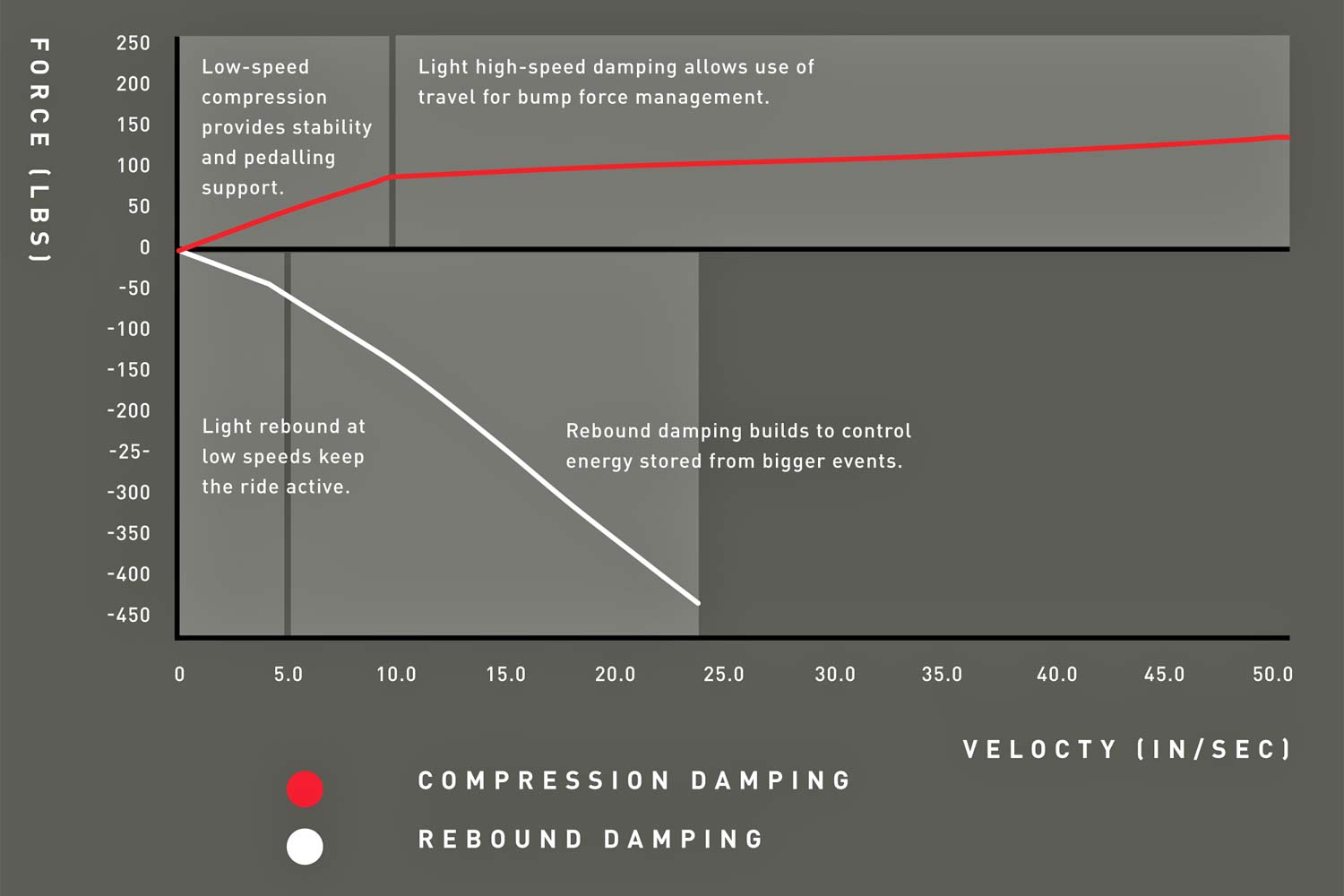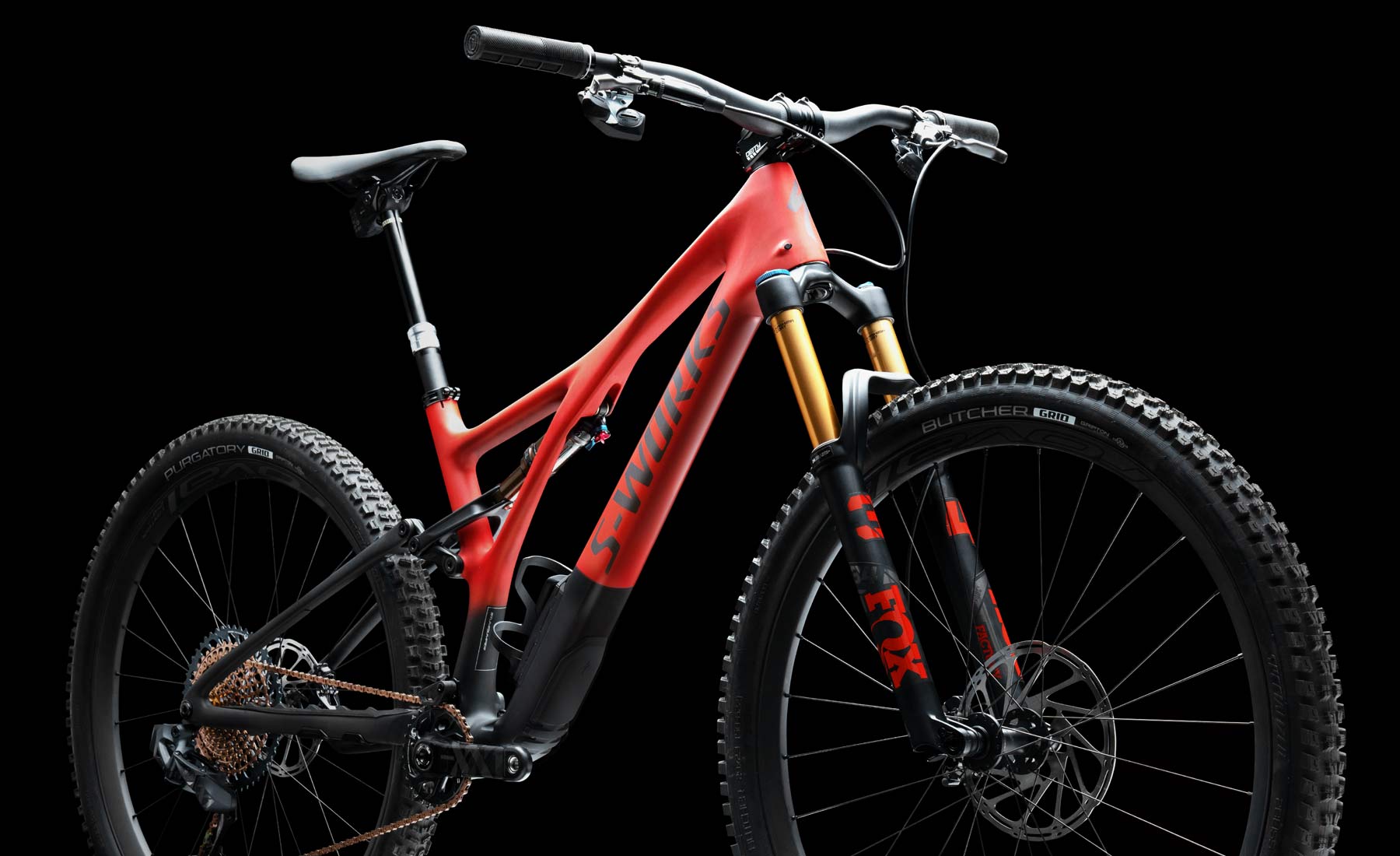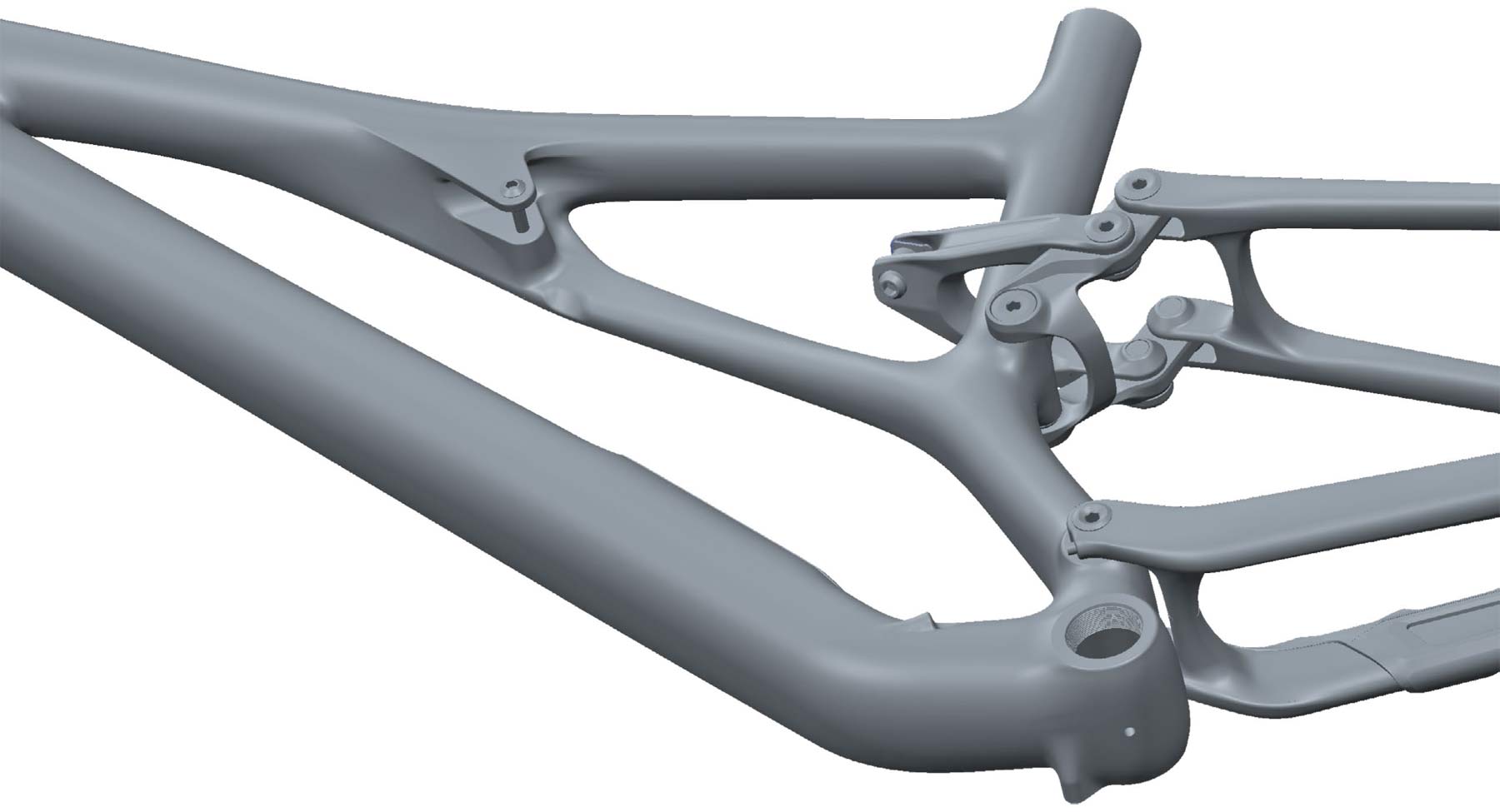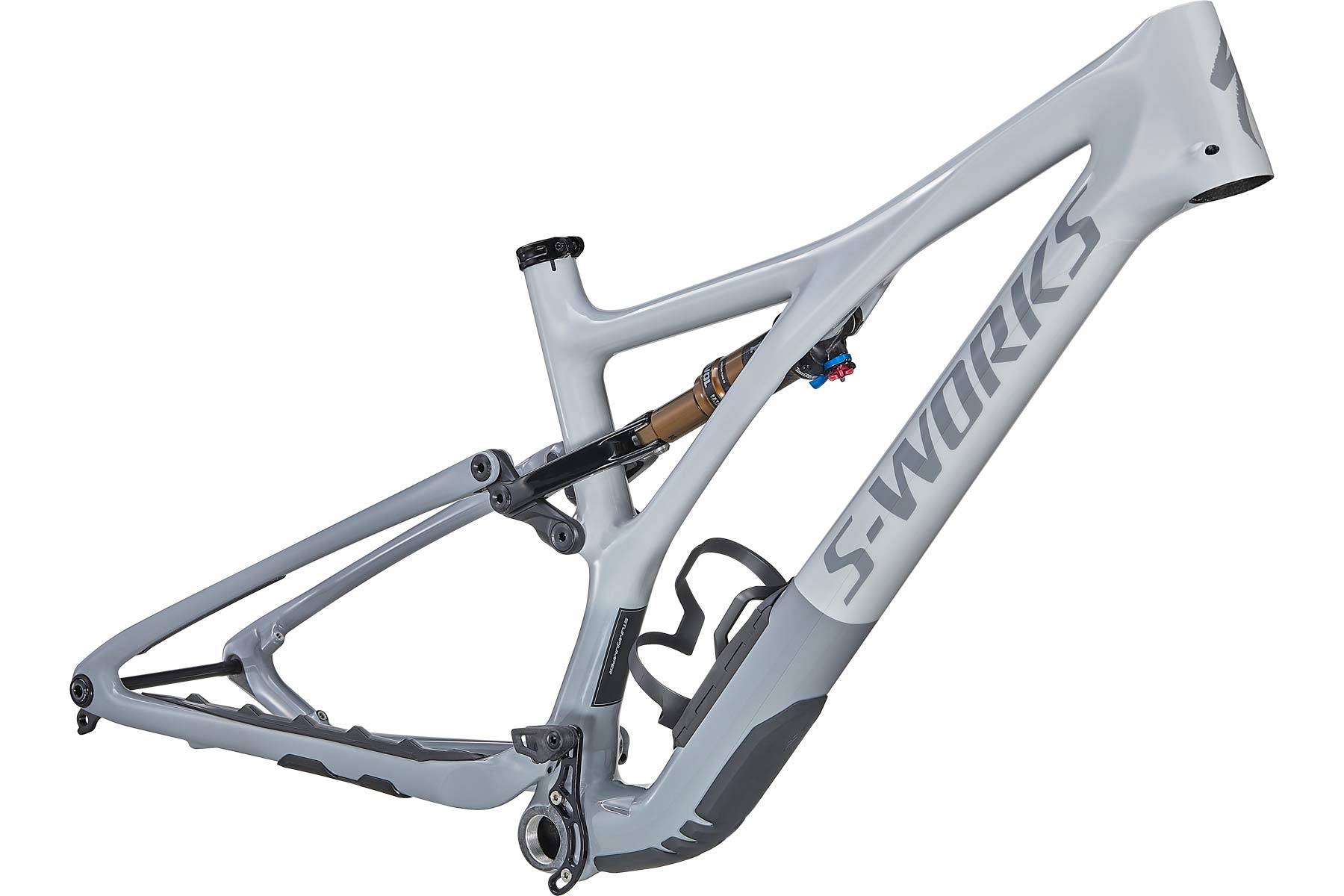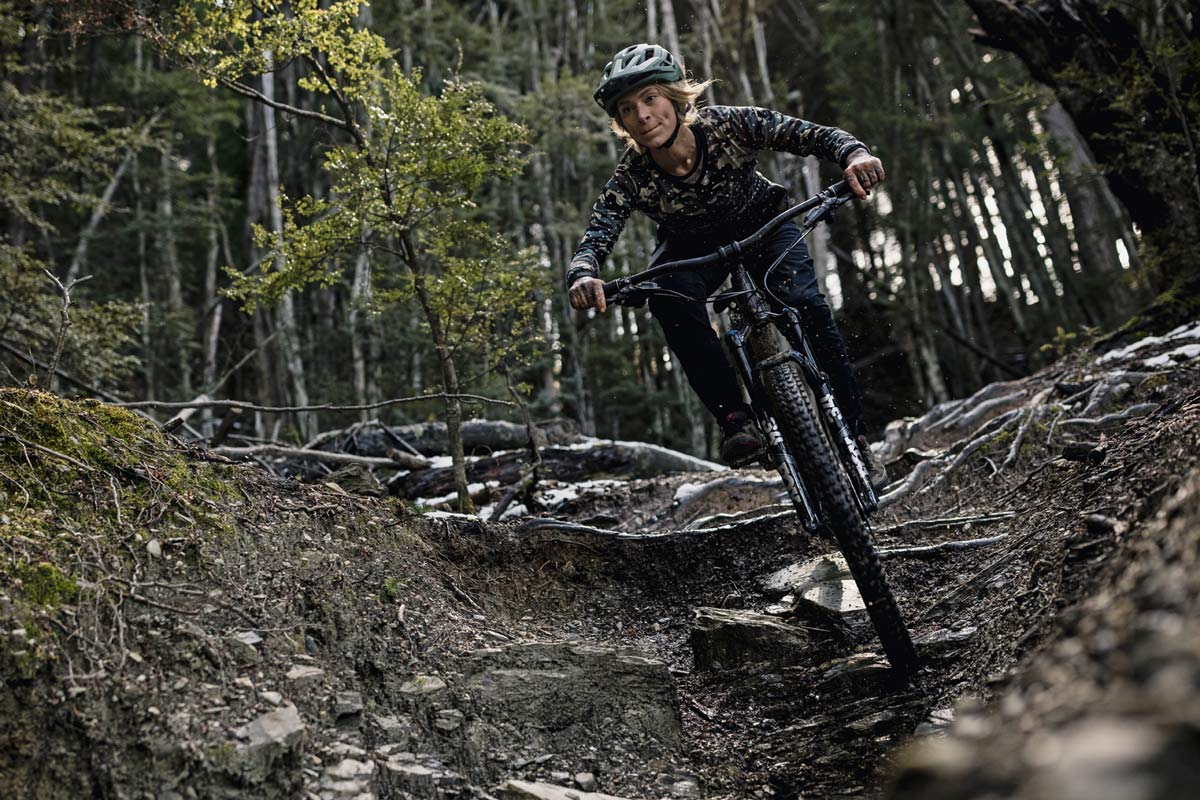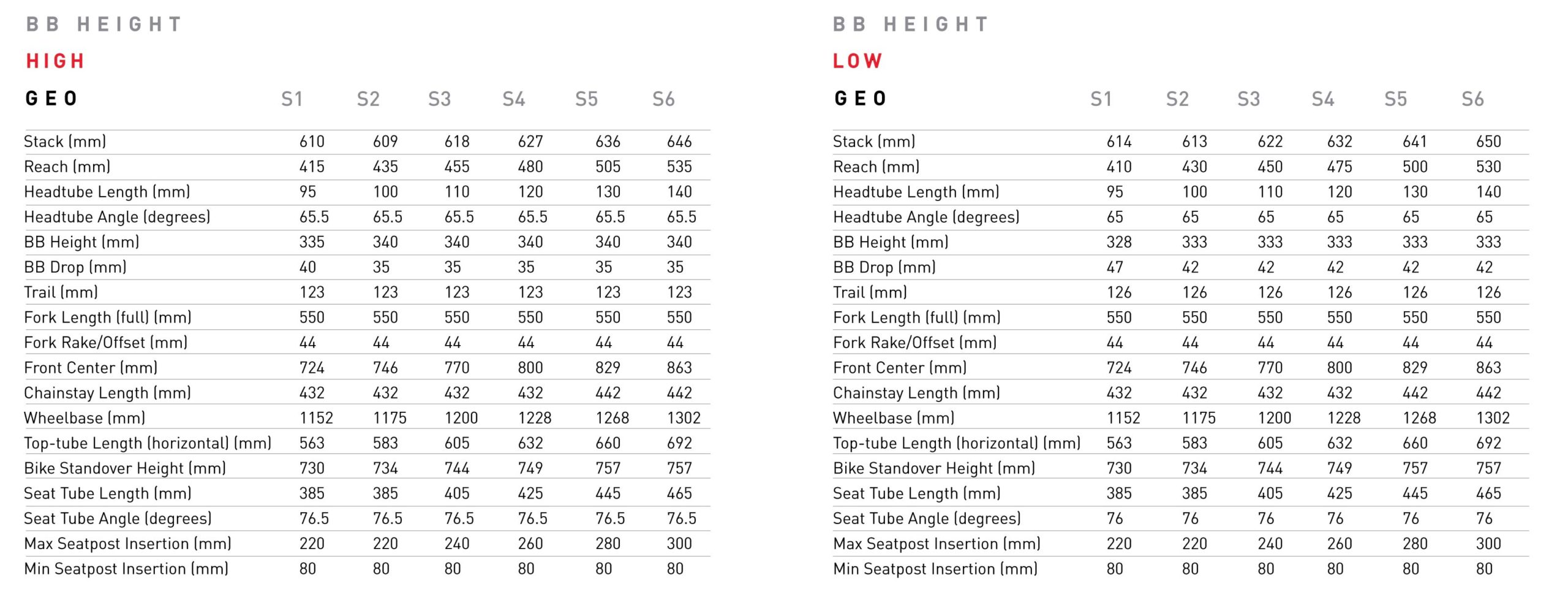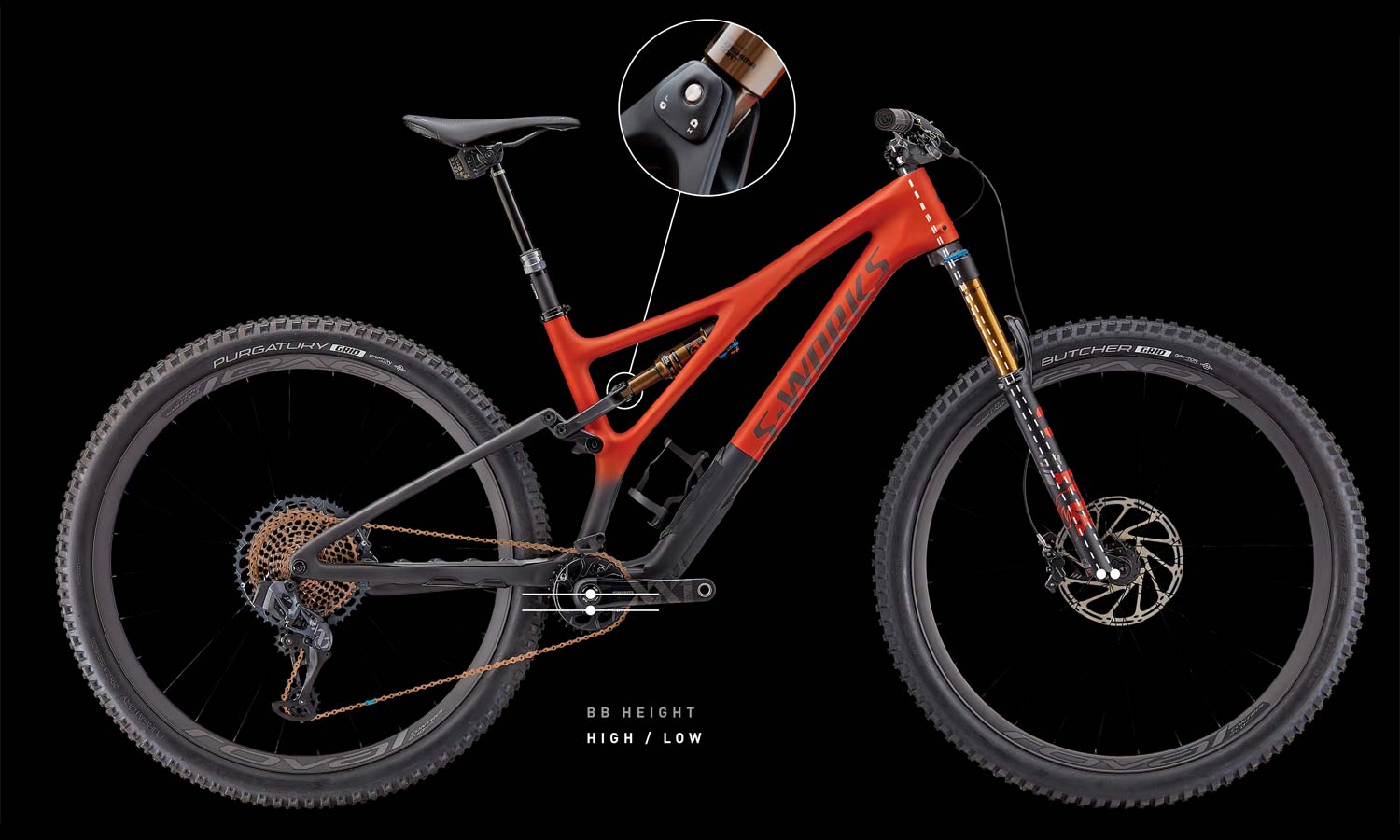Specialized again calls their latest all-new 2021 Stumpjumper “the ultimate trail bike” hitting a sweet spot of light weight and descending capability in a complete reworking of the classic Stumpy. Following up the longer-travel Stumpy EVO last week, the core 29er-only Stumpjumper doubles down on a much lighter carbon frame with a reworked & scaled back 130mm suspension design that pedals better than ever to rocket up the climbs, and slackened geometry to go down hill fast…
2021 Specialized Stumpjumper reshaped as do-it-all 29er trail bike
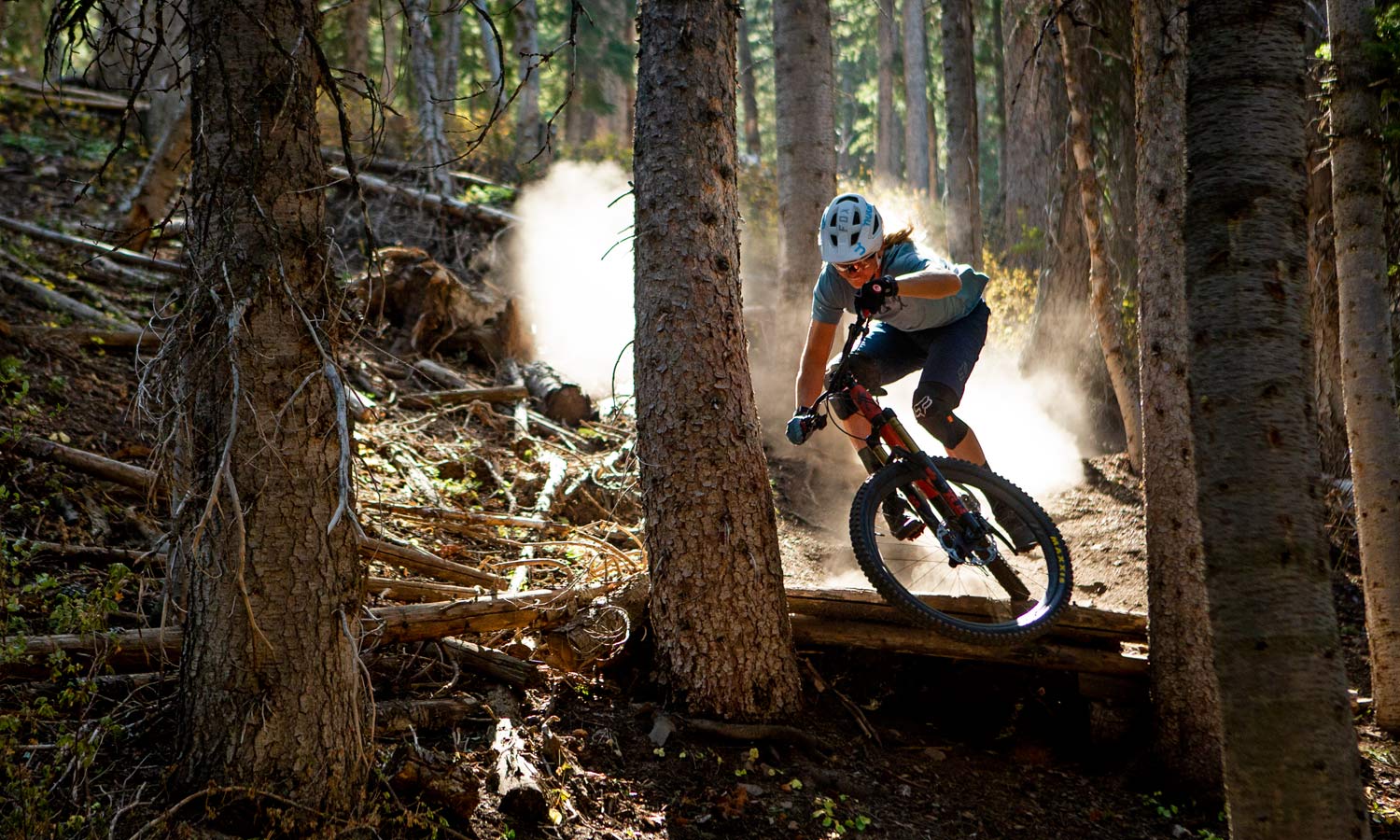
While the EVO goes down the path of longer travel and more wheelsize & adjustable geometry options, the Stumpjumper proper focuses in on a single goal – building the single lightest, fastest all-rounder mountain bike possible.
The all-new 130mm rear, 140mm front carbon 29er is meant to be the kind of do-it-all trail bike that makes you wonder what the N+1 hype is all about. Go toe-to-toe with your fastest XC friends on the big climbs, and still hang with your all-mountain bros on the techy descents.
Dialing back ten millimeters of rear wheel travel for the new 29er was a lot about shedding grams and boosting the efficient pedaling of the new Stumpjumper. But at the same time it helps differentiate the different character options available in the Stumpy + EVO family… since Specialized is calling the entire Stumpjumper line “The Ultimate Trail Bike” as one. You just have to pick your priorities – longer Stumpjumper EVO travel & adjustability… or faster, lighter Stumpjumper efficiency.
Stumpy Tech – What’s new?
Mixing the gravity design perspective of Specialized’s US team with the lightweight German engineering development team led by Peter Denk, the new Stumpjumper project was meant to redefine going uphill fast, while retaining fun on the down hills. The result is a new lightweight, short-travel carbon mountain bike that maintains an aggressive trail feel. Denk called it the perfect blend of the handling, calmer pedaling & lighter weight of the Epic EVO mixed with the descending capability & confidence-inspiring of the latest Stumpjumper EVO. A happy medium between XC and longer trail bikes.
Lighter weight with Missing Link suspension kinematics
To make such a combination work, the team set out to build a super light bike. And they had to redraw the entire Horst-link + Sidearm suspension to hit their ambitious weight target of less than 2.5kg with a shock and all hardware – putting the new trail bike firmly into XC bike territory.
The first way to save weight was to eliminate the chainstay pivot hardware altogether changing how the rear suspension moved by relying on tuned flex of the rear end – now dubbed Missing Link. The new Stumpjumper is by no means the first mountain bike suspension to rely on frame flex, but it is less common in trail bikes because of their longer travel.
But while most companies have focused for years building stiffer carbon frames, Specialized has… well always specialized in designing tuned flex into many of their bikes. On a 130mm travel bike though, it becomes a more complex design of how the spring of the seatstay actually acts on suspension design kinematics. Knowing that, the Stumpy engineers took advantage of the early additional negative spring effect of the Missing Link flex, that balances out at the sag point, then becoming a positive spring effect, so that in the end it actually complements the performance of the air shock curve – lending more small bump compliance and support later in the bike’s travel.
Not to be overlooked, the new bike uses new Fox air shocks with a “digressive piston design” that delivers improved low-speed compression support that significantly improves pedaling efficiency compared to the previous Stumpjumper, while still offering more linear compression across the rest of travel. Specialized admit that it is the new shock itself that does the biggest job improving how the new bike pedals when climbing – calling the new digressive-piston Fox shock “a big deal!”
Lighter weight with Lazy Fiber carbon tech
But redesigning the rear end alone wasn’t enough to shed the weight they were targeting – or at least not while maintaining stiffness. The new Specialized Stumpjumper gets subtle new slightly stiffer, more efficient tube shaping, but that still wasn’t enough. Denk tells that their first bike layup out of the development mold wasn’t anywhere near stiff & strong enough, because of the aggressive light weight goals.
So they turned to the latest Lazy Fiber technology developed for the new Aethos to get strength back without adding much weight. The Lazy Fiber idea as I understand it, is essentially about more carefully reorienting fiber layup, so that in any give load condition about 10-20% more of those individual layers of carbon are working to receive & resist loads across a wider range of conditions. Instead of simply rotating successive layers 45° or 90° relative to each other, it’s about more careful optimization based on real internal forces.
Beyond minimizing freeloader lazy fibers, the reshaped toptube and sidearm strut design also dropped a lot of grams. Simply further optimizing shock mounts & the sidearm to be perfectly tangential to the tube made the biggest weight savings, allowing an internally continuous and structurally optimized toptube.
The new bike also looks to get the same increased SWAT storage capacity as the new EVO for up to a 22oz bladder (although Specialized has given us mixed answers as to whether that’s really the case), with a reinforced design around the opening that only really adds 80g vs. a solid closed tube shape. Denk called this a no brainer compromise for getting weight off your back, since even what hip pack can match the hauling capacity at the same weight. They even talked about the added sprung weight actually improving suspension suppleness.
An intense 24 hour design cycle refined the layups, started each day with a shift in Germany meeting at the end of the workday in China, then CA would meet at the end of the Germans workday, then China meets at the end of California’s day, and so it repeated. More than a dozen layups designs later and the final 2420g S-Works frameset (size S4 w/ shock, all hardware, axles, collar, protectors, etc.) was ready – dropping more than 100g off the old version while improving performance & durability.
Updated trail-ready 29er Specialized Stumpjumper geometry
To make the mix of light climbing efficiency & trail-ready descending work, the team wanted to get everyone on 29″ wheels. The obstacle was really standover clearance, but Specialized managed to get even more space there then on the older small 27.5″ bike, in part by lowering BB height to match shorter cranks on smaller sizes. And while they leave the smaller wheelsize options with the EVO, there’s still the possibility to swap in a 27.5″ rear wheel for even more snappy ride on this bike.
Like the EVO, this new Stumpjumper also adopts the broad S1 (~XS) to S6 (~XXL) sizing range, designed to allow riders to pick more their ideal frame reach than a ‘T-shirt size’ range. The new frames also get rider-first size-specific tube sizes, thickness, layout configuration & stiffness targets to deliver the same ride feel or character for riders of all sizes.
Many smaller riders liked 27.5″ bikes just for the shorter rear end, so the S1-S4 gets crazy short 432mm chainstays. But just the same bigger riders often prefer 29ers for extra stability and a weight balance further in front of the rear axle, so S5-S6 get longer 442mm chainstays.
The new Specialized Stumpjumper is a degree slacker than before with two degrees steeper seat angles. But you still get flip chip geometry adjustability at the lower shock mount – changing 0.5° at the headtube and 7mm difference in BB height. The new head angle moves between 65/65.5°, and the new seat angle from 76/76.5°.
Tech details
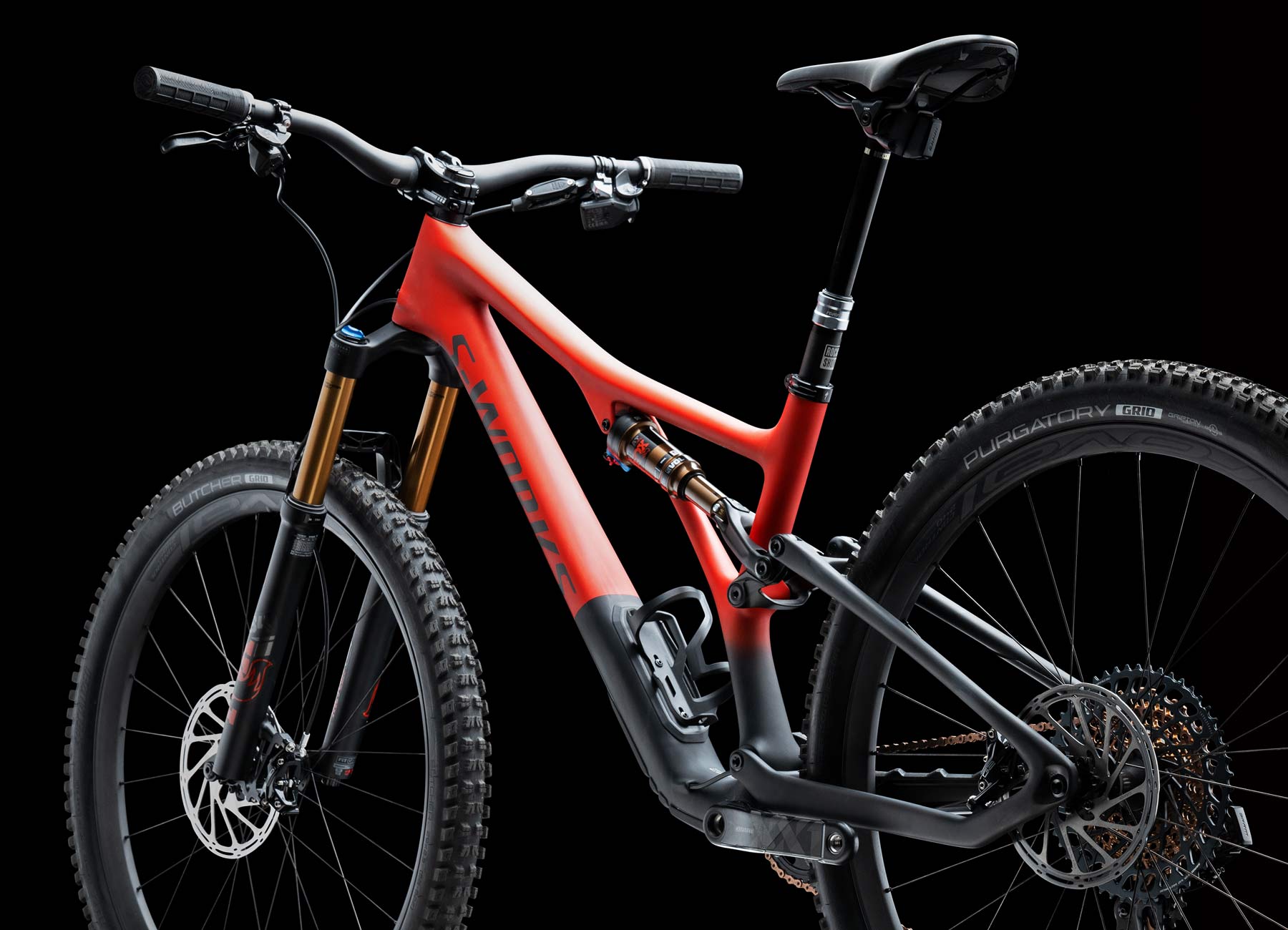
Specialized’s team put most of their focus telling us the story of the top carbon S-Works Stumpjumper, but carbon and alloy bikes share the same geometry, shock tune & ride feel, even though the aluminum bike still uses the Horst pivot.
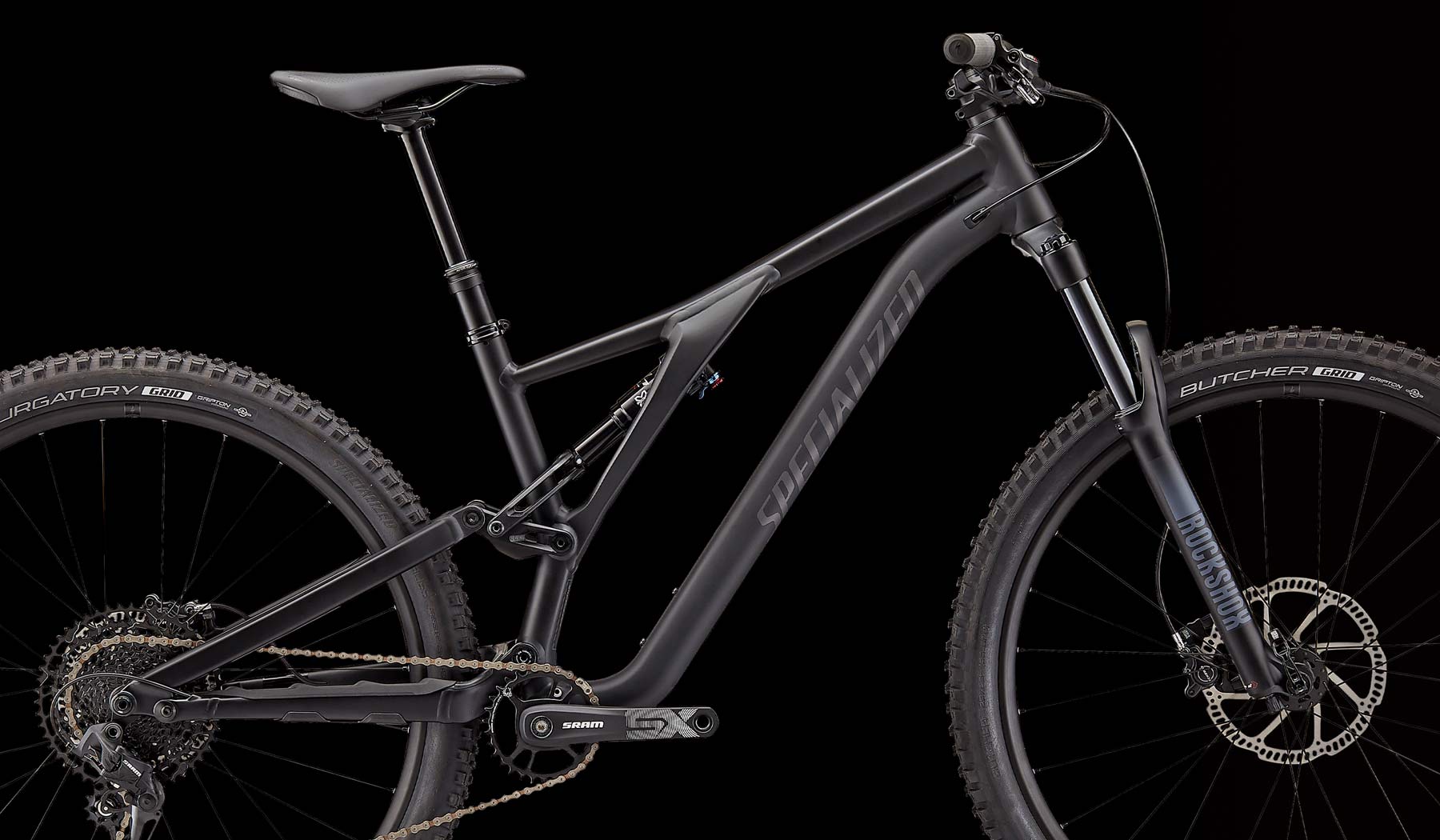
The 130mm bikes all feature Boost 148 rear spacing, sealed cartridge bearing pivots, flip chip geo adjust, a threaded BB, fully-enclosed internal cable routing, and a 30.9mm seatpost with stealth dropper routing. The bikes feature integrated downtube protectors and a sound damping chainstay protector, plus SWAT storage integration.
2021 Specialized Stumpjumper trail bike – Options & pricing
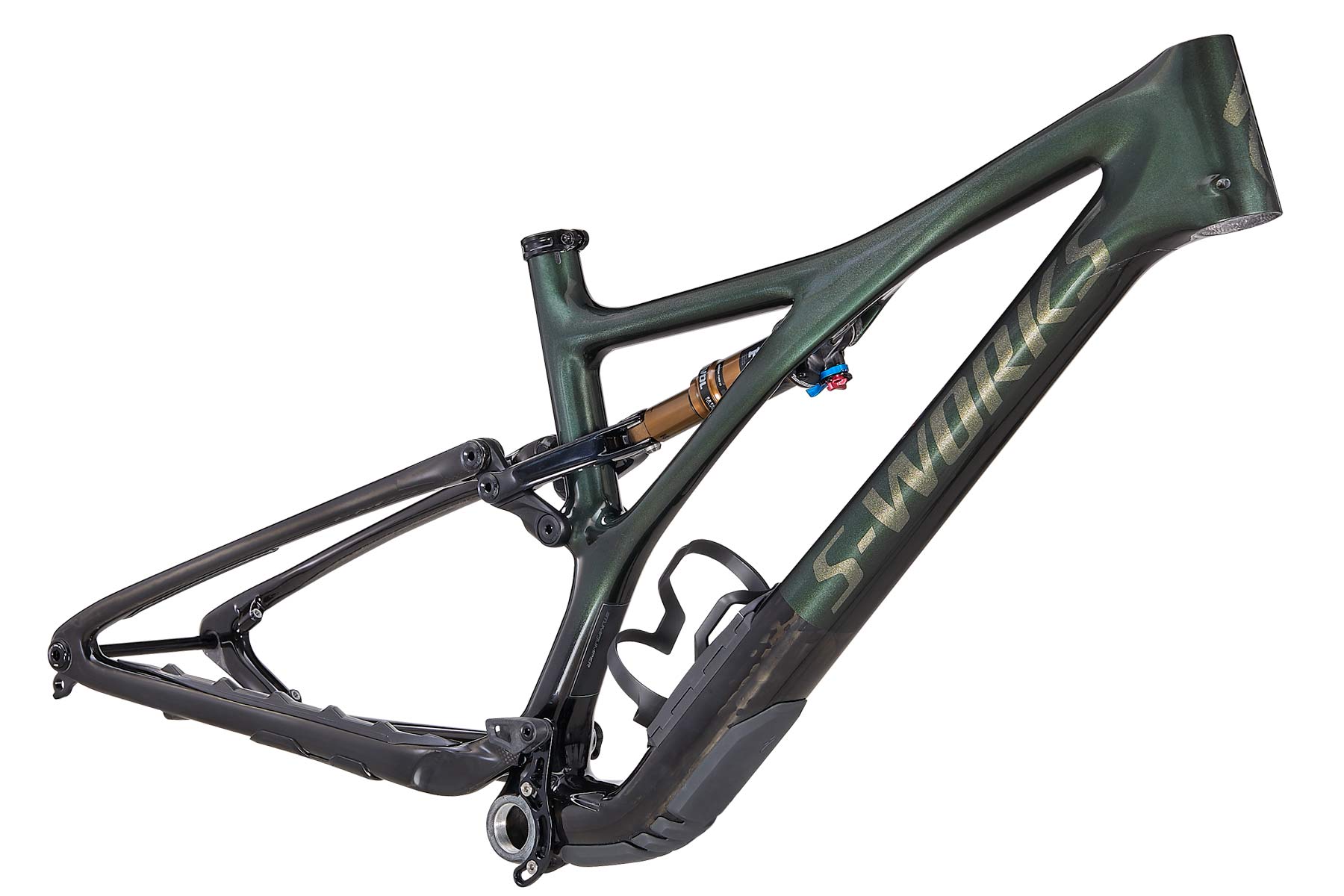
The all-new Stumpjumper is available in a wide range of specs, with four models sharing the same carbon frame, the carbon frameset itself for $2800 with a Fox Factory shock, or two more affordable alloy models.
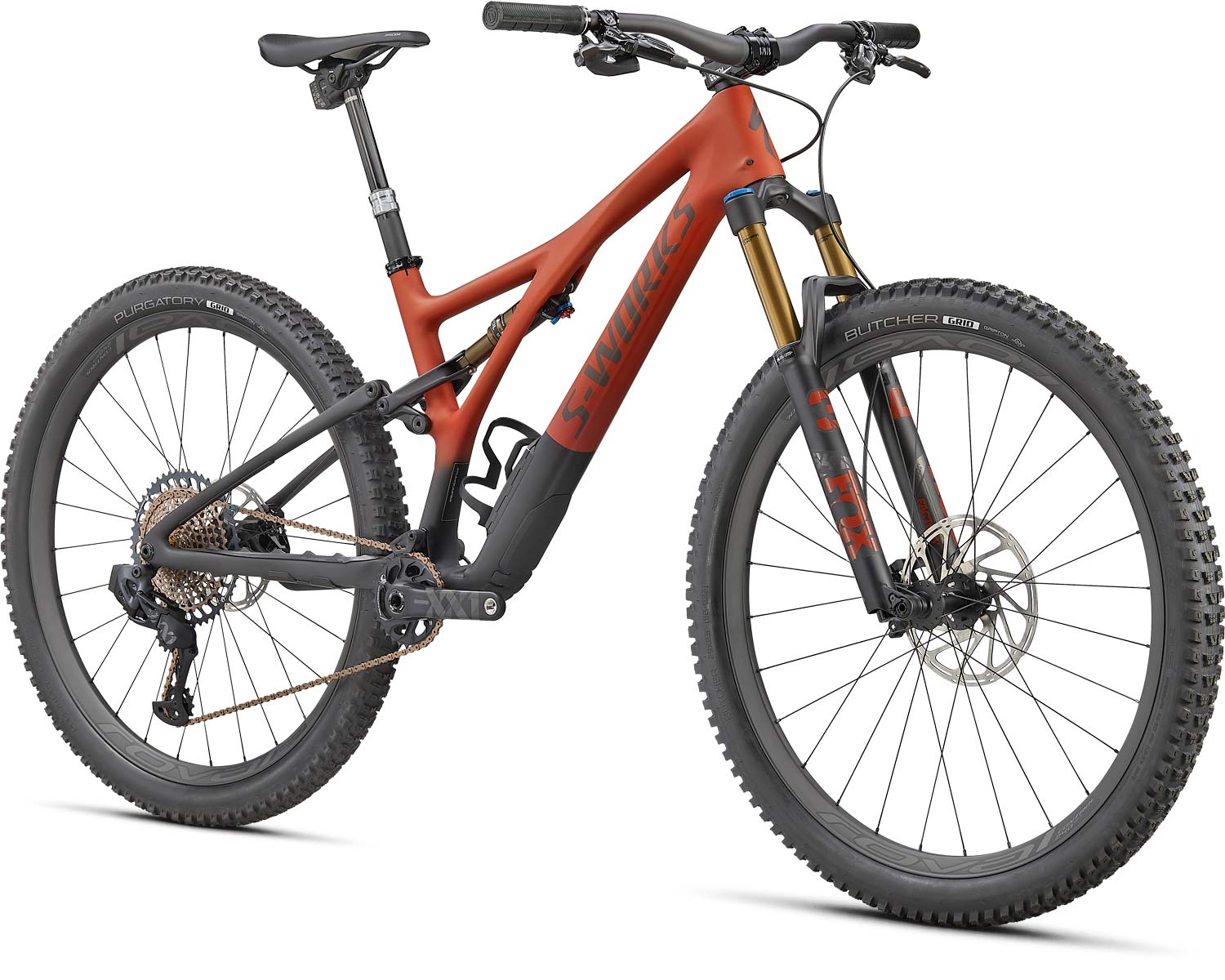
The top S-Works Stumpjumper sells for $9500 with a premium SRAM XX1 Eagle AXS build and carbon Roval wheels.
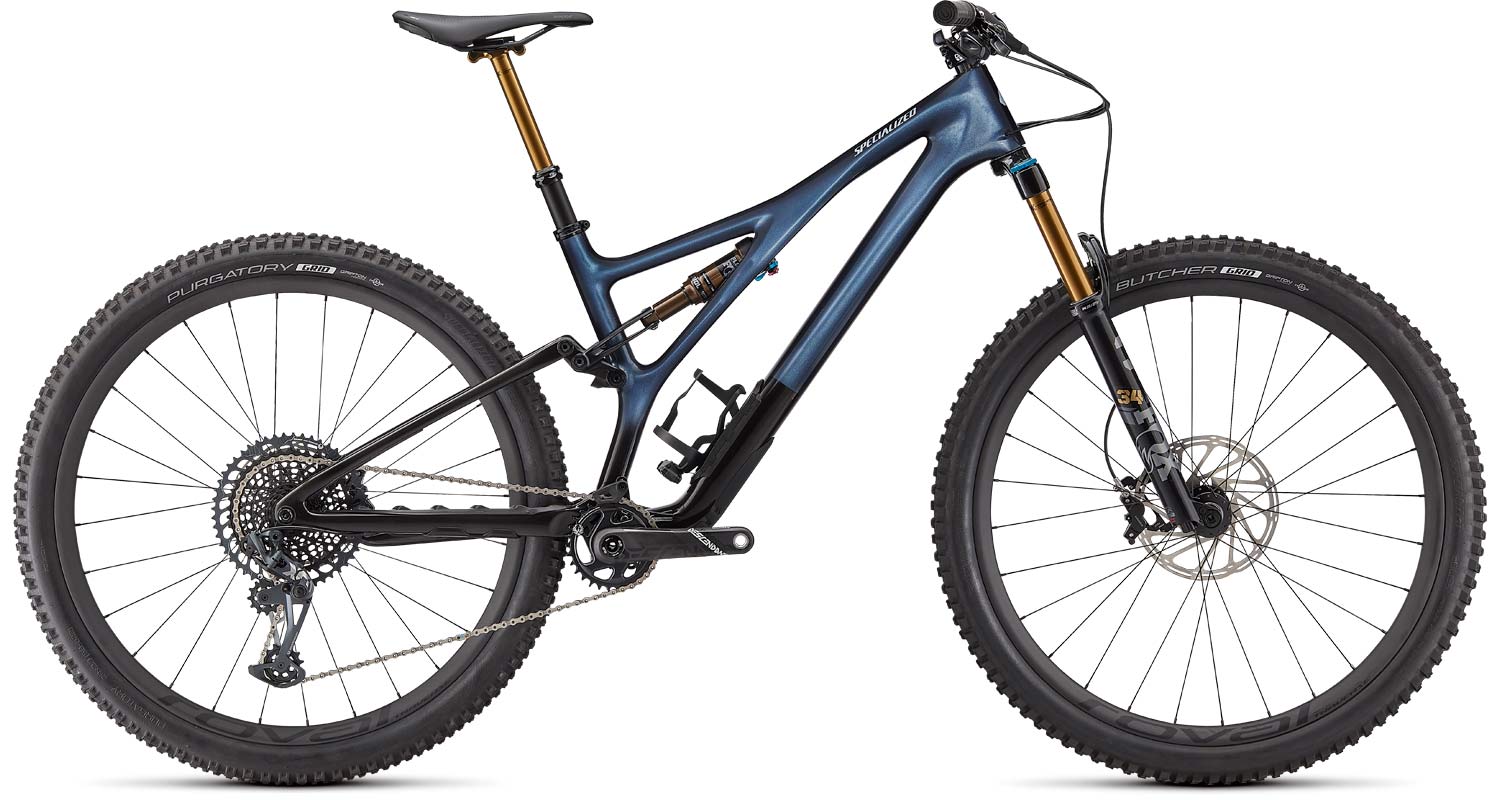
The $7000 Stumpjumper Pro goes mechanical with a complete X01 Eagle group & carbon Roval wheels.
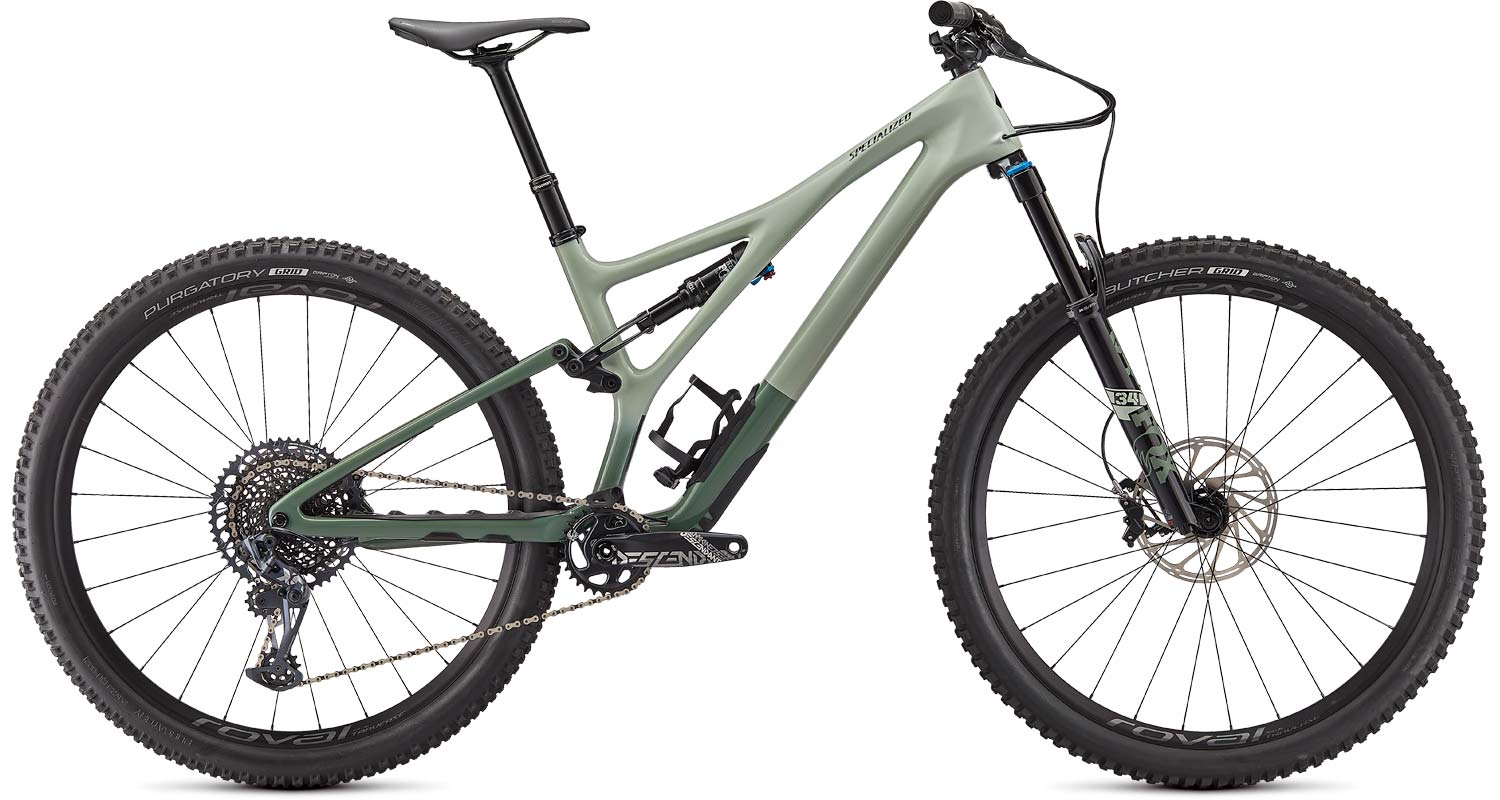
Then, the $4700 Stumpjumper Expert mixes in a mostly X01 Eagle build kit, with alloy wheels to bring the price down.
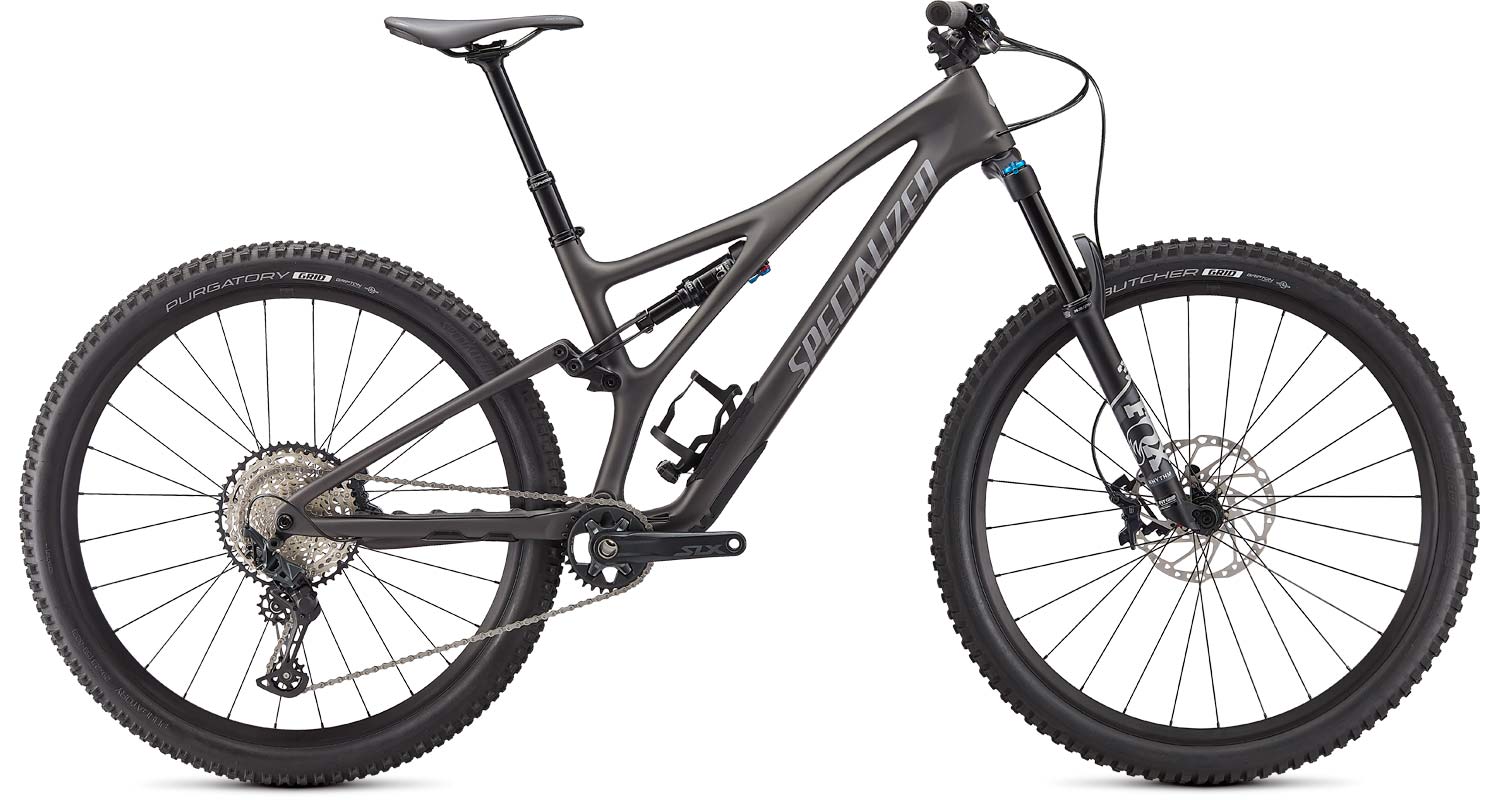
At $4000 the Stumpjumper Comp is the most affordable carbon build with a Shimano SLX groupset and alloy wheels.
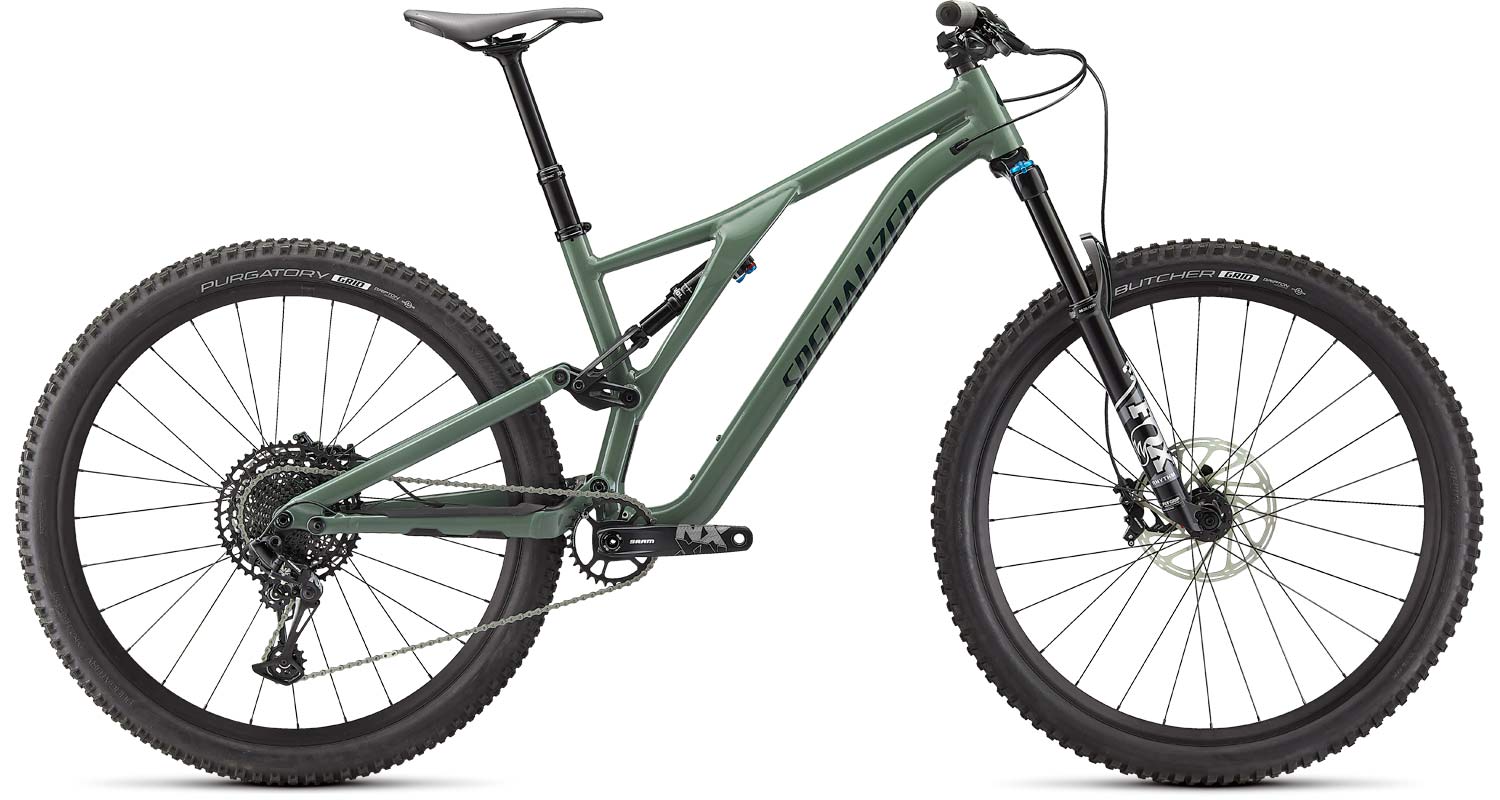
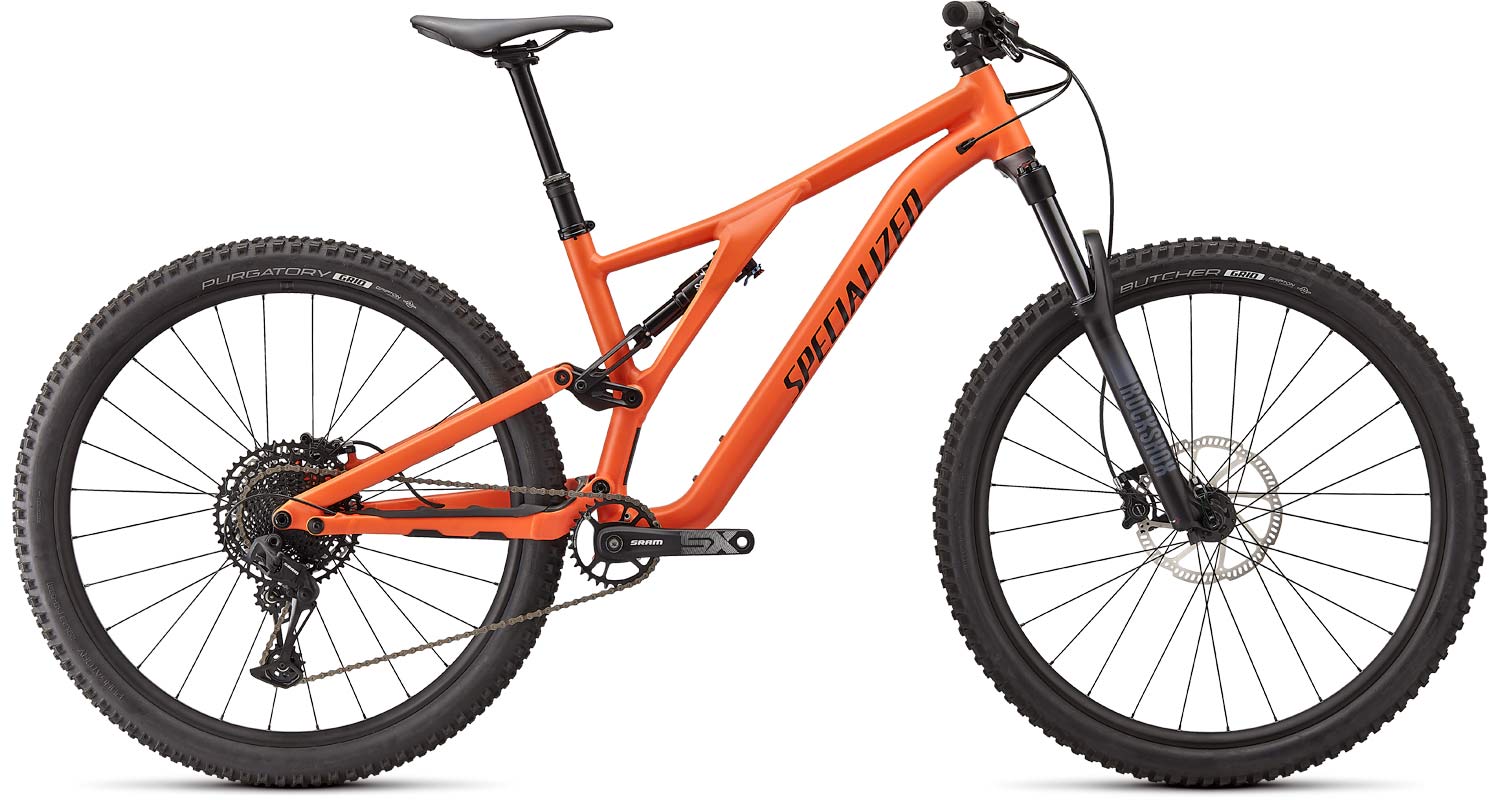
Of the two aluminum frame bikes, the $3200 Stumpjumper Comp Alloy gets an NX Eagle group, and the $2200 Stumpjumper Alloy goes with SX Eagle.
